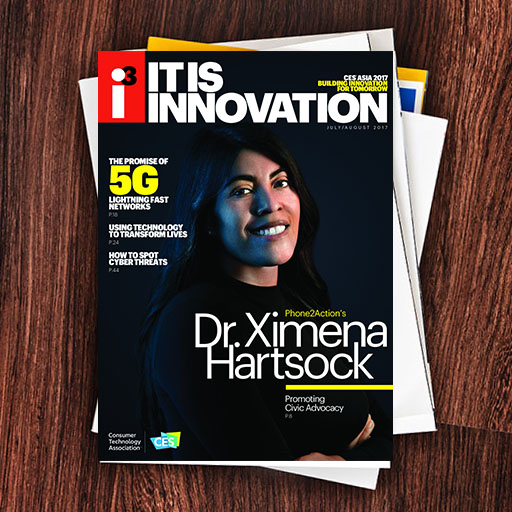Traditional speakers mechanically vibrate to produce sound, with a moving coil or membrane pushing the air back and forth. But researchers from the University of Exeter in the UK are using graphene to generate complex and controllable sound without moving parts by using thermoacoustics – producing sound via the rapid heating and cooling of material.
To simplify, it works by rapidly heating and cooling a layer of the atomically thin material using an alternating electric current. This thermal variation is transferred to the air, which expands and contracts, thus generating sound waves. Dr. David Horsell, a senior lecturer in the Quantum Systems and Nanomaterials Group at Exeter and his team found that by controlling the electrical current through graphene, they could produce sound and also change its volume to specify how each frequency component is amplified. They have combined a speaker, amplifier and graphic equalizer into one chip. This could make mobile phone screens that transmit both pictures and sound possible.
Other applications include ultrasound imaging for use in hospitals. The University of Exeter published “Multi-frequency sound production and mixing in graphene” by Dr. Horsell and Mark Heath in the journal Scientific Reports.
Computers operate using binary code composed of bits with a value of either 0 or 1. In quantum computers, the bits are replaced by qubits (quantum bits), which can be in two states simultaneously. One of the keys to developing a quantum computer is to create quantum bits that are stable and can function at very low temperatures. Researchers at the Laboratory of Photonics and Quantum Measurements at Ecole Polytechnique Federale de Lausanne (EPFL) are investigating a graphene-based quantum capacitor compatible with cryogenic conditions of superconducting circuits, and based on two-dimensional materials.
The capacitor consists of insulating boron nitride sandwiched between two graphene sheets. Thanks to this structure and graphene’s unusual properties, the incoming charge is not proportional to the voltage that is generated. This nonlinearity is a necessary step in the process of generating quantum bits. The resulting device could significantly improve the way quantum information is processed. This research was published in 2D Materials and Applications.
Graphene-based capacitors also have potential applications such as creating nonlinear high-frequency circuits – up to the terahertz regime. Most portable, wireless systems use reconfigurable circuits that can adjust an antenna to transmit and receive data in various frequency bands. Technologies, such as MEMS or CMOS, use silicon or metal and do not work well at high frequencies.
The Fraunhofer Institute for Organic Electronics, Electron Beam and Plasma Technology (FEP, Dresden Germany) together with research partners, has successfully produced OLED electrodes from graphene in a vacuum with an area of 2 × 1 square centimeters. In a steel chamber, a wafer plate of high-purity copper is heated to about 800 degrees Celsius. The team then supplied a mixture of methane and hydrogen and initiated a chemical reaction. The methane dissolves in the copper and forms carbon atoms, which spread on the surface. After a cooling phase, a protective polymer is placed on the graphene and the copper plate is etched away to reveal a single atom layer of pure graphene.
Dr. Beatrice Beyer, project leader, says products could launch in two years. Due to their flexibility, the graphene electrodes are ideal for touchscreens and won’t break if dropped. Instead of glass, a transparent polymer film is used. The Fraunhofer Institute partnered with Spanish company Graphenea S.A., to produce the graphene electrodes, and with British company Aixtron Ltd., to build the CVD reactors.
Researchers are working to eliminate or minimize impurities and defects that occur during the transfer of the wafer-thin graphene to another carrier material. Stay tuned for advances.

i3, the flagship magazine from the Consumer Technology Association (CTA)®, focuses on innovation in technology, policy and business as well as the entrepreneurs, industry leaders and startups that grow the consumer technology industry. Subscriptions to i3 are available free to qualified participants in the consumer electronics industry.